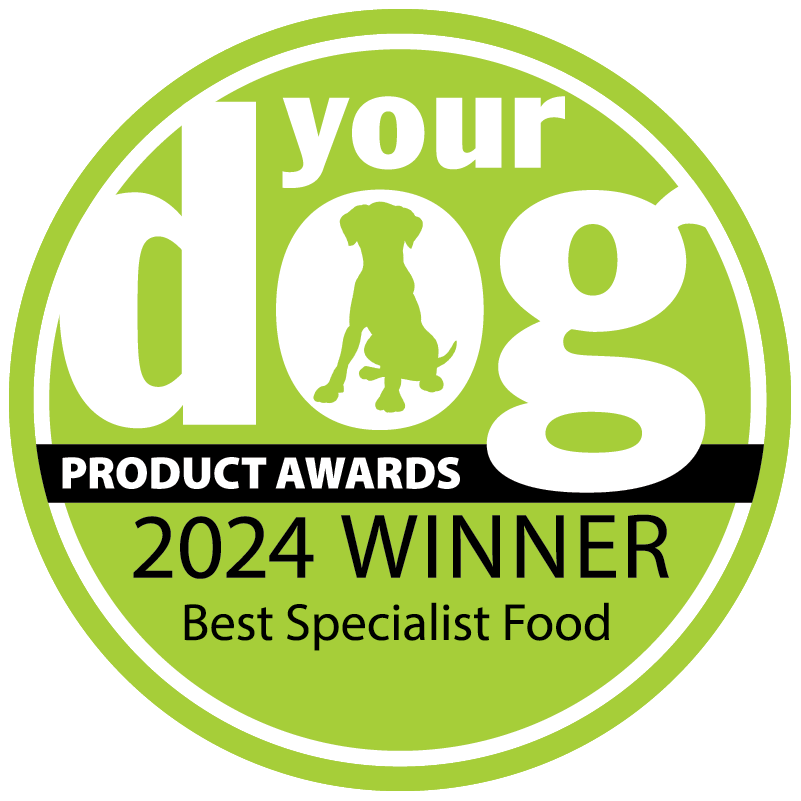
An overweight dog may seem like an unproblematic issue, but dog obesity contributes to a shortened life, heart, lung and kidney disease and arthritis in dogs. Unsure of how to tell if your dog is overweight? Here’s four tell-tale signs to look out for in your four legged furry friend;
View infographic on how to tell if your dog is overweight
How to overcome doggy obesity with diet?
One of the best ways to help your pooch lose weight is to gradually introduce a new diet. Measure out your dog’s portions according to their GOAL weight rather than their current weight. Use the feeding measurements on the side of the dog food pack, usually the recommended portion is 8-10g of food for every 1kg of weight (of the dog), so a 15kg goal weight would mean 120-150g of food PER DAY, not per meal.
Sometimes we may recommend the Weight Control Chicken & Oats dog food, which contains less calories per portion and has ingredients that help with reducing a dog’s calorie intake and overall hunger throughout the day. For example, oats for keeping a greedy dog feel fuller for longer, an overall low-fat option which is digestible and lots of fibre to maintain a low blood sugar level.
Keeping your dog active is important to help burn calories
This could consist of your dog running off the lead playing fetch in appropriate areas or even simply taking your dog for a few short on the lead walks every day. Due to the current situation this may not be possible so activities in the house such as playing tug, hide and seek and doggy yoga are all great ways to keep your dog moving.
Remember, activities must be gradually introduced so your dog doesn’t get overexerted, and make sure weather conditions are appropriate, for example if the weather is very hot, leave the exercise for early morning or late evening, to avoid heat of the day and prevent any chances of your dog getting heatstroke.
When it comes to treats and any extras you would usually add to your dog’s food to make it more exciting, it’s best to totally cut these out of the diet permanently. However, if you still want to give these to your dog, then it is advised to deduct the weight of these extras from your dog’s main meals each day.
For example, if each treat weighs 2g, then for each treat you give, reduce the food by 2g, so 5 treats means reducing the food by 10g in total. Some good low calorie and low-fat treats from Burns include Burns Kelties Treats, Weight Control Treats and Carrot Treats. Vegetables are also great to give as treats.
Most pets are overweight through no fault of their own. Usually it is due to the owner being desensitised about how much they are feeding their dog and confusion over what size their dog should be. Over the past few years, it’s noticeable how overweight dogs are much more commonplace and how this is not seen as a topic of concern. It seems the public has lost the image of a lean dog being healthy and instead this seems to have been replaced with the perceived healthy image of a chubby dog.
Nobody comments upon a fatter dog, as they’re seen as ‘well fed’. A lean/slightly underweight dog can be scrutinised as ‘unhealthy’ and ‘skinny’. This is very backwards thinking, as a more overweight dog is more susceptible to disease and has a much shorter lifespan.
Feeding your dog the right amount of the right food is how to maintain a healthy dog and a happy owner.
If you have any concerns about your pooch feel free to contact one of our nutritionists on live chat or on our helpline page and they will be happy to help.
Coauthored by: Annabel Holliday on work experience at Burns Pet Nutrition and Laura Crotch-Harvey







